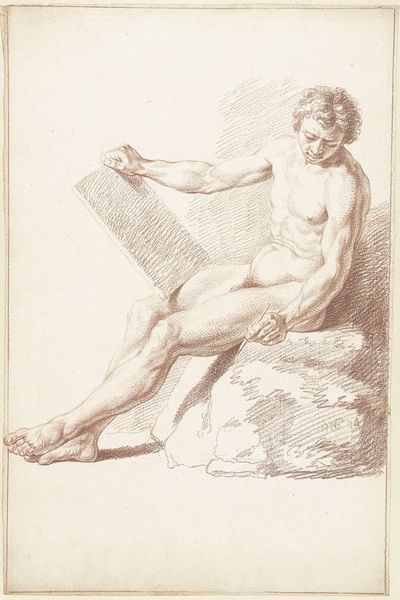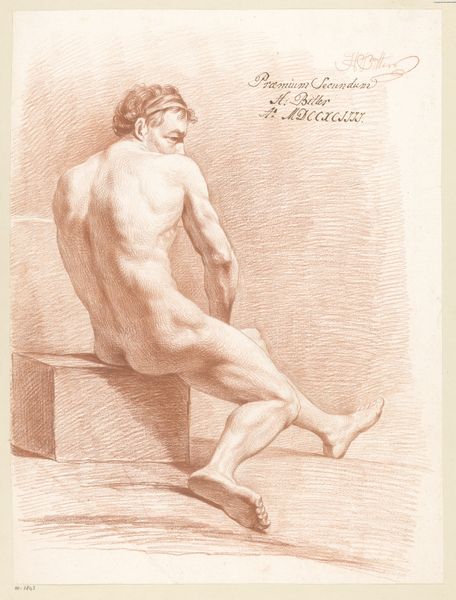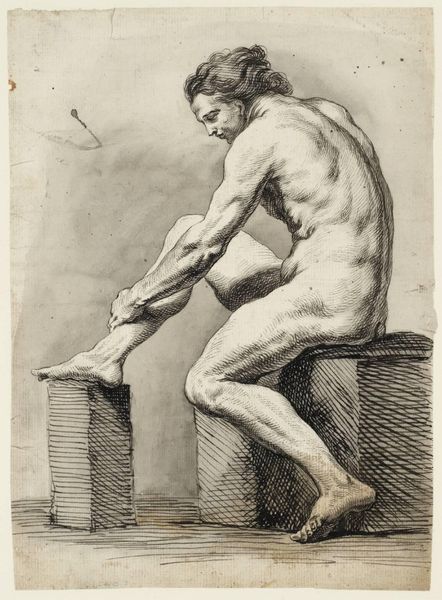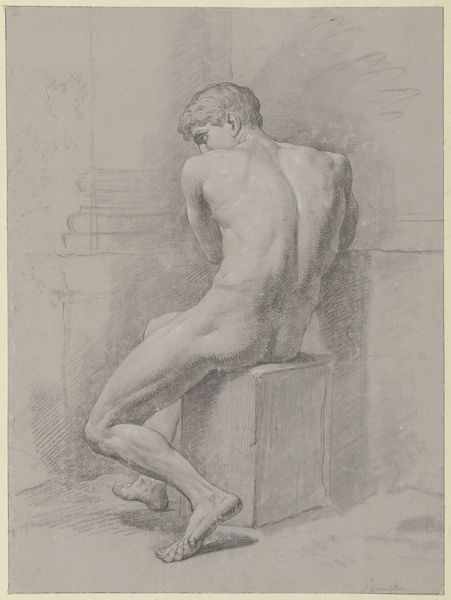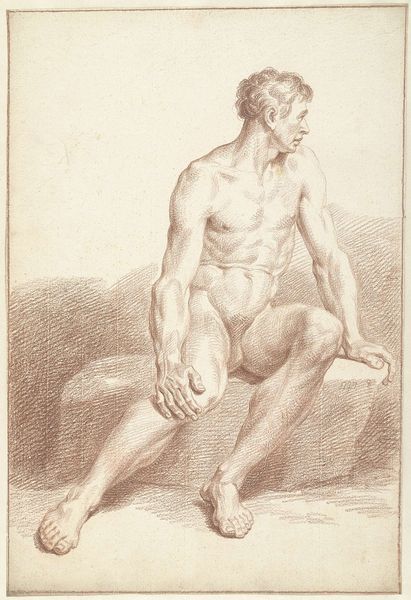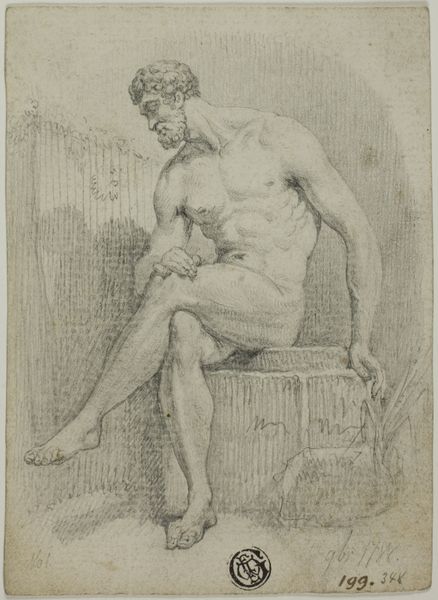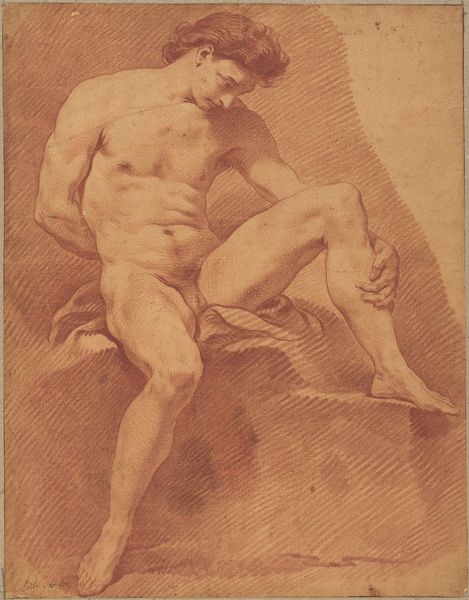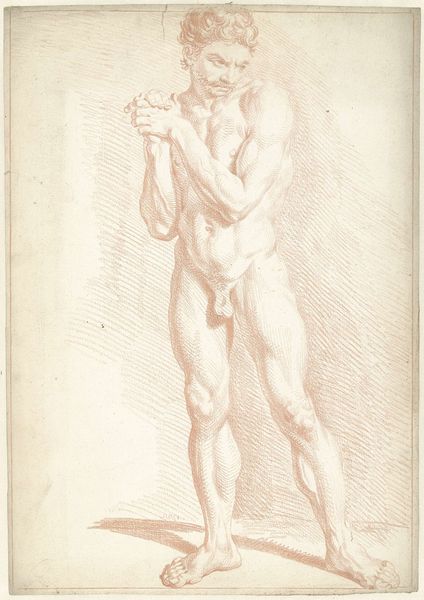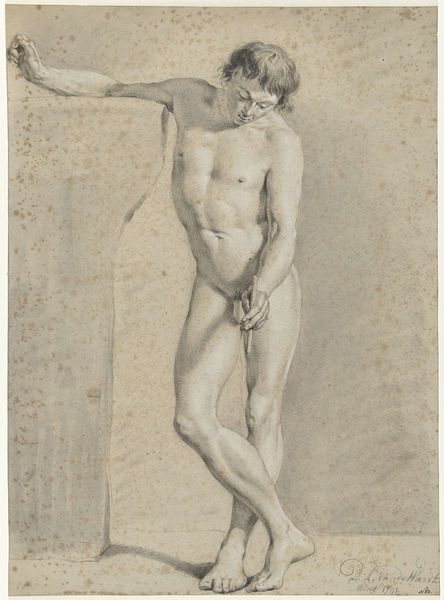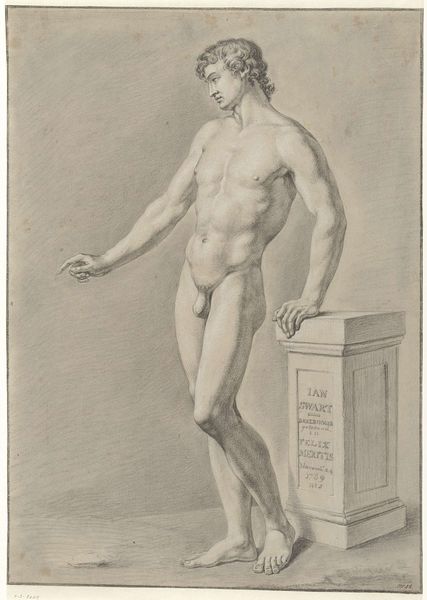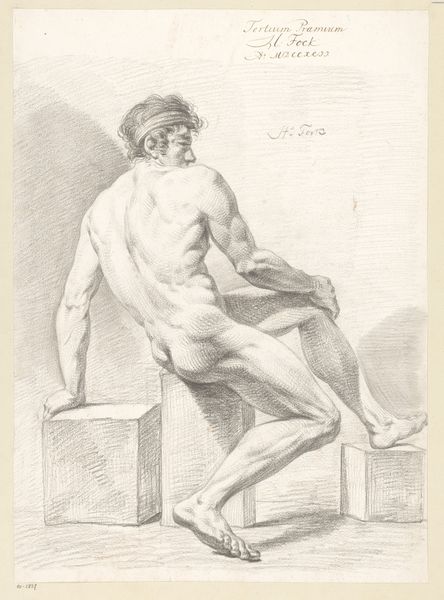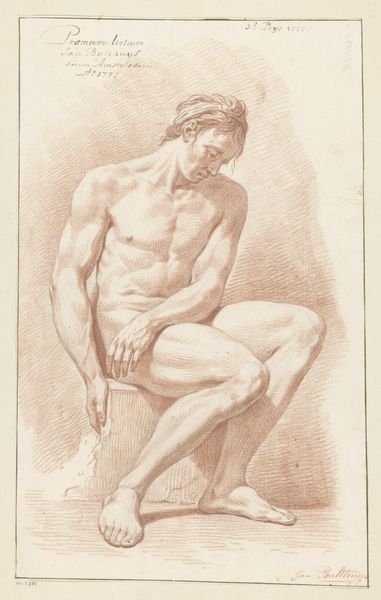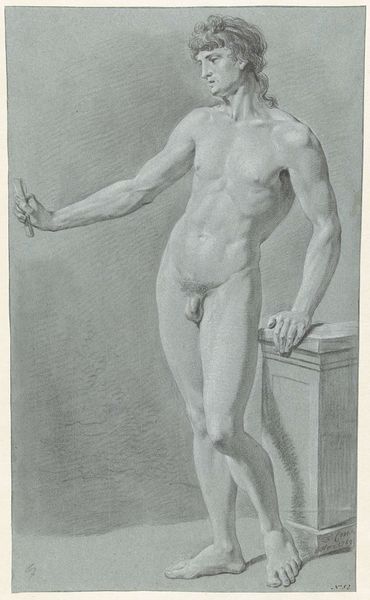
drawing, paper, pencil
#
portrait
#
drawing
#
baroque
#
charcoal drawing
#
figuration
#
paper
#
pencil drawing
#
underpainting
#
pencil
#
portrait drawing
#
academic-art
#
nude
Dimensions: height 465 mm, width 297 mm
Copyright: Rijks Museum: Open Domain
Curator: Let's consider this drawing by Bernard Picart, titled "Zittend academienaakt, als tekenaar," possibly from 1726. It’s currently held in the Rijksmuseum. It's a striking academic nude study. Editor: My immediate reaction is to the somber mood. It feels both very classic and yet unsettling in its depiction of male form, quite muscular and self-absorbed. It prompts questions about representation and performativity, doesn’t it? Curator: Absolutely. Looking at the materiality, you can see the delicate rendering achieved through the use of pencil and paper. There's an underpainting technique evident too. The means of producing such detail must have required not only significant skill, but control of labor in production. Editor: True, and the academic art style firmly roots it within established power structures and historical standards of beauty, standards that were, and often still are, decidedly gendered and racialized. Where are the models that challenged such ideals? This almost fetishizes idealized musculature. Curator: Interesting. Perhaps, but also notice how Picart focuses on the act of artistic production itself. The sitter is also a draughtsman, engaged in making. This turns the work inward, reflecting on the processes of art. Editor: Still, I struggle with its place within historical narratives of male gaze, class, and exclusion. It would be beneficial to learn about who sat, and their status. Understanding such relationships challenges our appreciation or reception. Who held agency? What dynamics defined production? Curator: Context always adds enriching perspective. It seems that beyond the study of human form, we have material to investigate class dynamics surrounding labor in arts. We can discuss gendered depictions, study social impacts, etcetera. Editor: Definitely. Situating it within discourse gives nuance, provoking a conversation with tradition and potentially subverting its intended meaning through critical lens. Curator: Seeing Picart’s drawing alongside conversations around body politics, materialism, and representation of gender adds invaluable meaning and opens fascinating discourse. Editor: Precisely. And by acknowledging those broader concerns and challenges, it enriches not only art appreciation but opens necessary discussions.
Comments
No comments
Be the first to comment and join the conversation on the ultimate creative platform.
